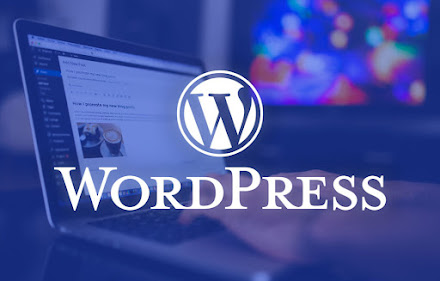PPC Campaign
What is PPC? Learn the Basics of Pay Per Click (PPC) Marketing
Whether you've heard about PPC marketing and are curious to learn more, or you already know you want to use PPC to market your business but aren't sure where to start, you've come to the right place! This is the first lesson from PPC University, a series of guided courses that teach you everything you need to know about PPC to make it work for you.
table of Contents
What is PPC?
How does PPC advertising work?
What is Google Ads?
How PPC works in Google Ads
How to do PPC with Google Ads
PPC Keyword Research
PPC campaign management
How to get started with PPC
What is PPC?
PPC stands for pay per click, a digital advertising model in which the advertiser pays a fee each time one of their ads is clicked. Basically, you pay for specific visits to your website (or landing page or app). When PPC works correctly, the cost is trivial because the click is worth more than what you pay for it. For example, if you pay $3 for a click, but the click results in a $300 sale, you've made a huge profit.
PPC ads come in all shapes and sizes (literally) and can consist of text, images, videos, or a combination of both. They can appear on search engines, websites, social media platforms, and more.
Search engine advertising (also called paid search or search engine marketing) is one of the most popular forms of PPC. It allows advertisers to bid on the placement of ads on a search engine's sponsored links when someone performs a search related to their commercial offering. For example, if we bid on the keyword "Google Ads Audit," our ad for our free Google Ads Performance Tester could appear in the SERP for that or a related query:
How does PPC advertising work?
PPC advertising looks different from platform to platform, but in general the process is as follows:
- Choose your campaign type based on your objective.
- Adjust your settings and targeting (audiences, devices, locations, scheduling, etc.).
- Specify your budget and bidding strategy
- Enter your destination URL (landing page).
- Create your ad.
Once your ad runs, where and when it appears, and how much you pay to click on it are all determined algorithmically based on your budget, bid, campaign settings, and the quality and relevance of your ad.
Because all platforms that offer PPC advertising want to keep their users happy, they reward advertisers who create relevant and reliable pay-per-click campaigns with higher ad placement and lower costs.
So if you want to maximize your profits with PPC, you need to learn how to do it right.
📙 Free Guide >> PPC 101: The Beginner's Guide to PPC
What is Google Ads?
Google Ads is the most popular PPC advertising system in the world. The Google Ads platform allows businesses to create ads that appear on the Google search engine and other Google sites.
Every time a search is started, Google digs into the collection of ads and chooses a set of winners to appear on the search engine results page.
'Winners' are chosen based on a combination of factors, including the quality and relevance of their keywords and ad campaigns, as well as the size of their keyword bids. We will explain it in the next section.
How PPC works in Google Ads
When advertisers create an ad, they choose a set of keywords to target that ad and place a bid on each keyword. So when you bid on the keyword "pet adoption," you're telling Google that you want your ad to show on searches that match or are related to pet adoption (learn more about keyword match types here).
Google uses a series of formulas and an auction process to decide which ads to show for a given search query. When your ad enters the auction, it will first be assigned a Quality Score from one to 10 based on your ad's relevance to the keyword, your expected click-through rate, and the quality of the landing page.
Your Quality Score is then multiplied by your maximum bid (the highest bid you're willing to pay for a click on that ad) to determine your ad rank. Ads with the highest ad rank scores will be shown.
Google uses a series of formulas and an auction process to decide which ads to show for a given search query. When your ad enters the auction, it will first be assigned a Quality Score from one to 10 based on your ad's relevance to the keyword, your expected click-through rate, and the quality of the landing page.
Your Quality Score is then multiplied by your maximum bid (the highest bid you're willing to pay for a click on that ad) to determine your ad rank. Ads with the highest ad rank scores will be shown.
This system allows winning advertisers to reach potential customers at a price that fits their budget. Actually, it's a kind of auction. The following infographic illustrates how the Google Ads auction works.
How to do PPC with Google Ads
Conducting PPC marketing through Google Ads is particularly valuable because, as the most popular search engine, Google receives enormous amounts of traffic and therefore delivers the most impressions and clicks to your ads. How often your PPC ads appear depends on the keywords and match types you select. While several factors determine the success of your PPC advertising campaign, you can achieve a lot by doing the following:
Bid on relevant keywords. Developing lists of relevant PPC keywords, tight keyword groups and appropriate ad copy.
Focus on the quality of the landing page. Create optimized landing pages with persuasive, relevant content and a clear call to action tailored to specific search queries.
Improve your quality level. Quality Score is Google's rating for the quality and relevance of your keywords, landing pages, and PPC campaigns. Advertisers with better Quality Scores get more ad clicks at lower costs.
Get attention. Attractive advertising copy is vital; and if you run display or social ads, so will eye-catching ad creative.
How to Conduct Effective PPC Keyword Research
Keyword research for PPC can be time-consuming, but it's also incredibly important. Your entire PPC campaign is keyword-based, and the most successful Google Ads advertisers are constantly expanding and refining their PPC keyword lists. If you only do keyword research once, when you create your first campaign, you're probably missing out on hundreds of thousands of valuable, long-term, low-cost, highly relevant keywords that could drive traffic to your site.
You can check out our complete guide to keyword research here, but in summary, an effective PPC keyword list should look like this:
Relevant: You obviously don't want to pay for clicks that don't convert. That means the keywords you bid on must be closely related to the bid you are selling.
Comprehensive: Your keyword research should include not only the most popular and searched terms in your niche, but also long-tail keywords. These are more specific and less common, but they make up the majority of traffic generated by searches. In addition, they are less competitive and, therefore, cheaper.
Expansive: PPC is iterative. You want to continually refine and expand your campaigns and create an environment where your keyword list constantly grows and adapts.
If you want to find high-volume, industry-specific keywords to use in your PPC campaigns, be sure to check out our free keyword tool.
Manage your PPC campaigns
Once you've created your new campaigns, you'll need to manage them periodically to ensure they remain effective. In fact, regular account activity is one of the best predictors of account success. You should continually analyze your account performance and make the following adjustments to optimize your campaigns:
Continuously Add PPC Keywords – Expand the reach of your PPC campaigns by adding keywords relevant to your business.
Add negative keywords: Add non-converting terms as negative keywords to improve campaign relevance and reduce wasted spend.
Review Expensive PPC Keywords – Review expensive, underperforming keywords and disable them if necessary.
Refine landing pages: Customize your landing page content and CTAs to match individual searches and increase conversion rates. Don't send all your traffic to the same page.
Split Ad Groups – Improve click-through rate (CTR) and Quality Score by splitting your ad groups into smaller, relevant ad groups, allowing you to create more targeted ad copy and landing pages. You can find more information about the account structure here.
.png)



.png)


Comments
Post a Comment